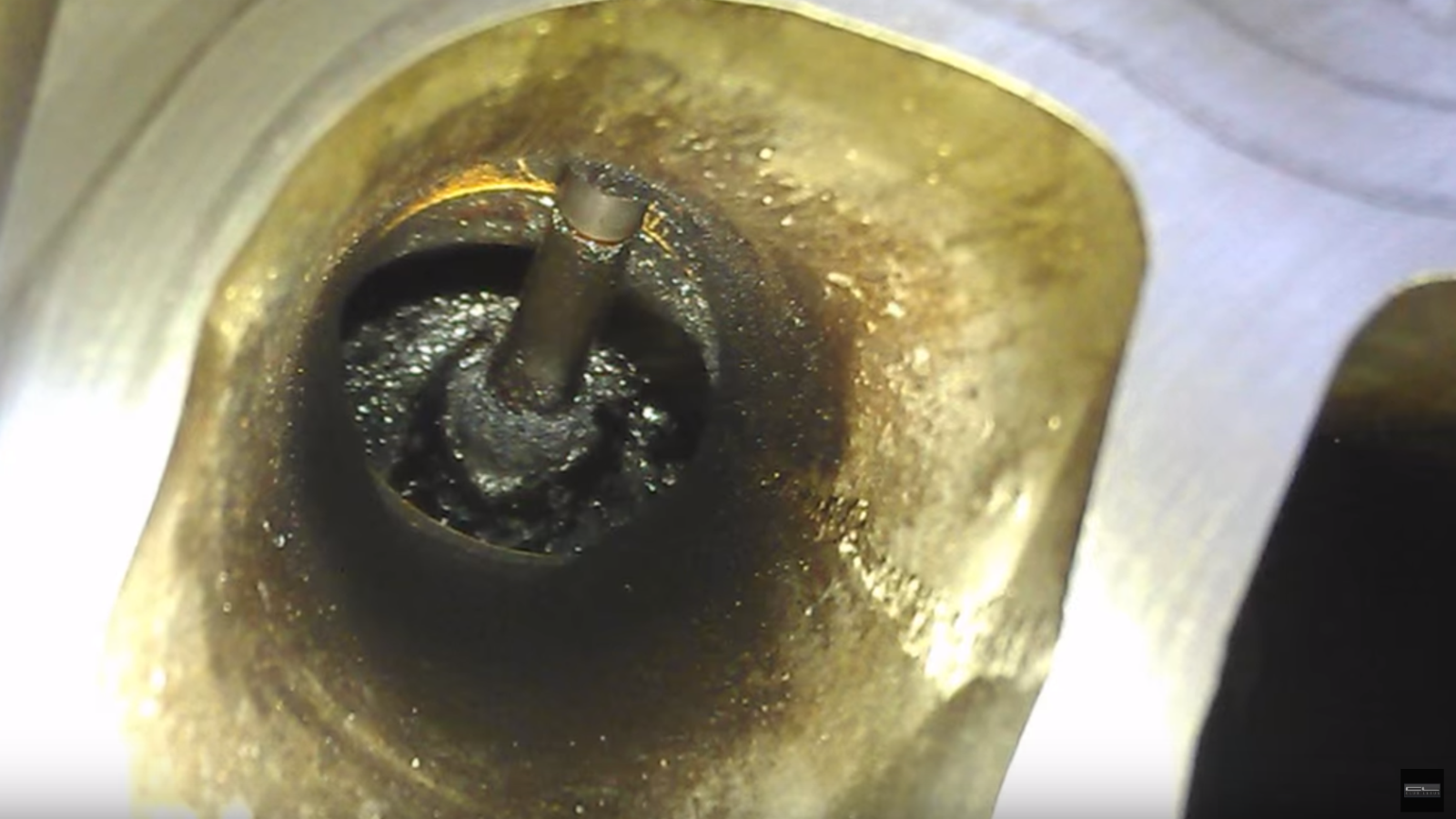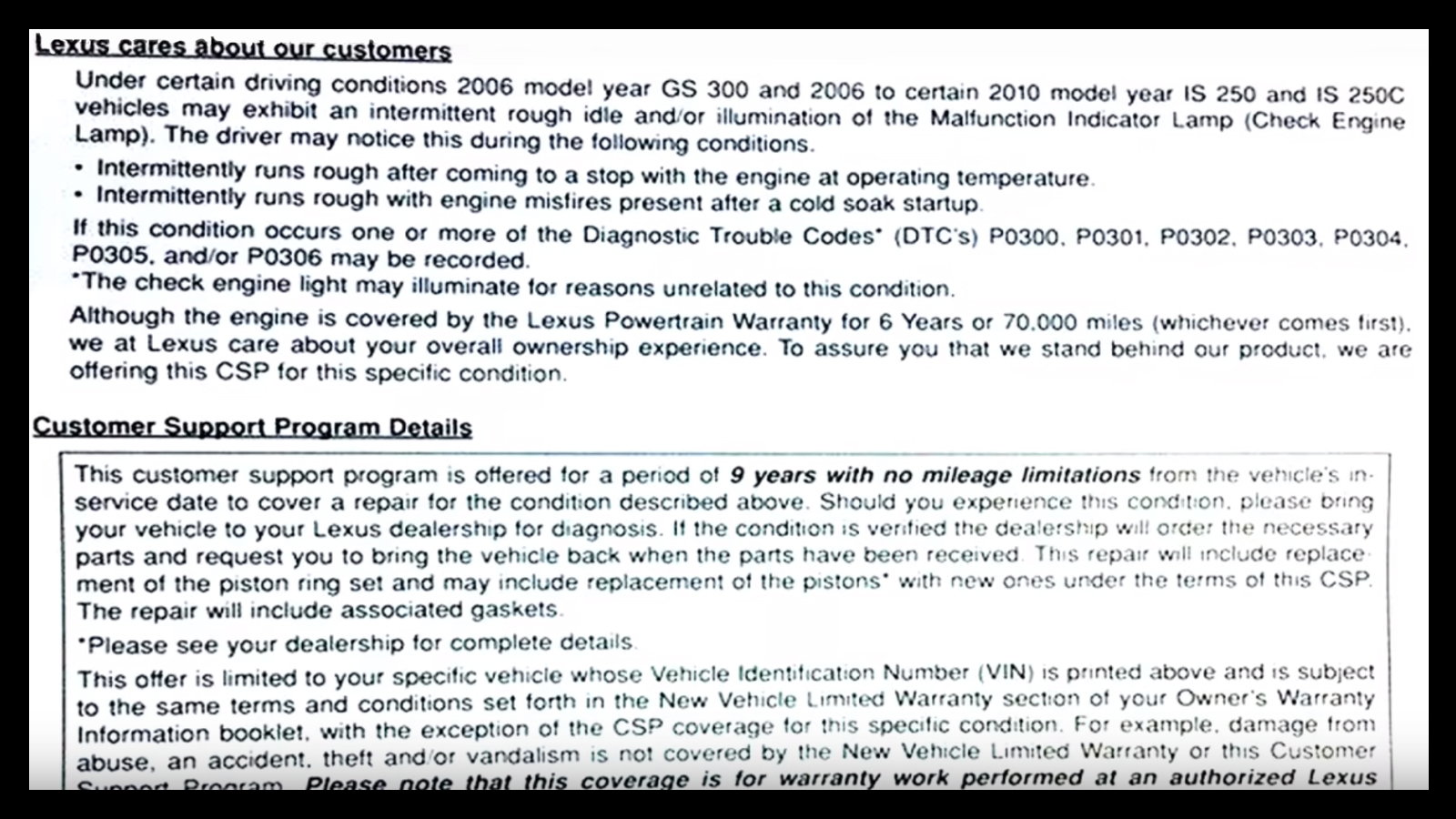DIY: How to Deal With Carbon Buildup
If you have a Lexus that's been idling poorly, dieseling, running-on, or consuming more oil than normal, you're not alone. Find out what is covered under warranty, and how to fix it yourself if it's past warranty coverage.
















Introduction
This article applies to the Lexus IS 250 (2006-2010).
Design issues with the IS 250/250C 2.5L 4GR-FSE engine prompted Lexus to issue a Customer Service Program (CSP) in the U.S. in 2012 to correct problems with carbon buildup in the cylinder head and combustion chambers. Letters advising owners of this program were mailed to registered owners in the U.S., but Lexus of Canada has not issued a similar CSP for those cars sold or owned in Canada. This problem does not exist with the IS 350/3.5L engine.
Carbon Happens
There are two primary issues. First, the 2.5L engine used in the second-generation IS 250/250C relies on direct injection for fuel delivery to the cylinders. This shoots gas directly into the combustion chamber and bypasses the intake valve. Over time, carbon deposits build up on the valve stems, which restricts air flow. The IS 350's 3.5L 2GR-FSE engine, on the other hand, uses a port injection system and a direct injection system. The port injectors spray fuel in the air passage above the valve. Fuel washes off the stem of the valve, which greatly reduces carbon buildup.
Hot Spots
Over time, carbon deposits build up on the valves, cylinder head and piston faces, which creates "hot spots" as the deposits shed heat slower than bare components, resulting in a rough-running condition. As the fuel-air mixture is burned, and if excessive oil is present, carbon is left behind. Over time, this collects and builds up. Many people report engine misfiring and rough idle after a cold start, the car sits overnight, or after coming to a stop when out driving. This is caused by poor distribution of the fuel-air mixture, which is being restricted by air flow passing through gunk-accumulated valve stems. The latter can be attributed to pre-detonation, as carbon on the pistons and head may be hot enough to ignite the air and gas mixture before completion of the compression stroke.
(Related Discussion: Lexus Injection Systems Explained - ClubLexus.com)
Carbon Buildup Trouble Codes
The onboard diagnostic computer (OBD) will detect a rough-running engine from the various sensors placed in the intake and exhaust streams, as well as in the ignition system. The Check Engine Light (CEL) or the CHECK VSC-CHECK ENGINE-TRAC lights are a prompt for service technicians to plug in a code reader. Codes will be "thrown," stating what items mechanics should look into.
Duplication Test
The dealer has to be able to replicate the rough idle condition before the vehicle is eligible for the CSP. To perform the duplication test yourself:
- Warm engine until temp gauge reads approximately in the center between cold and hot.
- Rev engine to 4,000 rpm for 30 seconds.
- Immediately as you get to 30 seconds, run it up to 6,000 rpm very quickly and immediately release the gas pedal.
- Let it return to idle. If misfires are present, you will know by the unmistakable shaking or shuddering. You may not get misfires or codes the first time around, which is why dealers sometimes keep cars overnight to try what they described as a cold soak.
Pro Tips
- You can download an app and buy a cable to connect to the OBD port.
- If you have access to a code reader, some of the diagnostic codes that may show up include PO300, PO301, PO302, PO303, PO304, PO305, and PO306.
Lexus Customer Support Program
The dealer will check for stored error codes. If none are found, they will attempt to replicate the conditions that bring on the misfire condition. If it meets the criteria, the service department contacts Lexus for authorization to make the repairs. The dealer will take the engine apart and clean the pistons and cylinder bores. Pistons, piston rings, and related parts may be replaced if they're worn beyond tolerance. If the cylinder bores are scored and can't be cleaned up with honing, the block may have to be machined or replaced. The car will be in the shop for one or more days. Also, 2006 GS and IS owners get new top engine parts, such as valve springs, valve stem seals, etc. You shouldn't pay any labor when having it replaced, which is usually 3 hours. If the rings need to be replaced, then the engine will need a complete tear-down.
The Customer Support Program is offered for a period of nine years from the date of purchase, with no mileage limitations from the vehicle's in-service date to cover repairs for the carbon buildup issue. This means those who own a car that has passed the 9-year point will have to take matters into their own hands. The repair costs between $2,000 and $3,000 if the car is out of warranty.
Pro Tip
Many dealers aren't acknowledging the CSP, so have documentation printed out. Print out the IS250 Rough Idle and the CSP notice letter (post #748) and take them to the dealer.
(Related Discussion: IS 250 Carbon Build Up Customer Service Program- ClubLexus.com)
Preventive Measures
The simplest way to prevent carbon buildup in the IS 250 is to regularly drive the engine hard. The heat and force of high rpm driving will knock off whatever carbon that has accumulated on the valves and pistons. This is a common solution to this issue for direct injected engines regardless of manufacturer. Remember, "A redline a day keeps the mechanic away."
Sea Foam Engine Treatment
Sea Foam engine treatment is another good option. Once it is added to the gas tank, it mixes with gasoline to help clean out injectors by breaking up and dissolving carbon deposits on a regular basis. You can also install an inline "catch can" in the PCV system to reduce the amount of oil-laden fumes going back into the engine; it will let the oil settle in a bowl that has to be drained periodically. There's also an oil flush procedure (done HOT through multiple fills and drains), which brings the spring tension back to the piston rings WITHOUT opening the motor for a ring job. It typically costs $250 for the flush.
Pro Tip
Using drop-in additives may be a quick and easy fix, but it's not permanent. You still have the underlying issues of direct injection and ring/piston replacement to deal with. You may need to overhaul the engine if you plan on keeping your car for an extended period.
(Related Discussion: Seafoam For the 4GR-FSE - ClubLexus.com)
>>Join the conversation about Carbon Buildup in your Lexus IS right here in the Club Lexus forum.
For help with your maintenance and repair projects please visit our how-to section in the forum.
